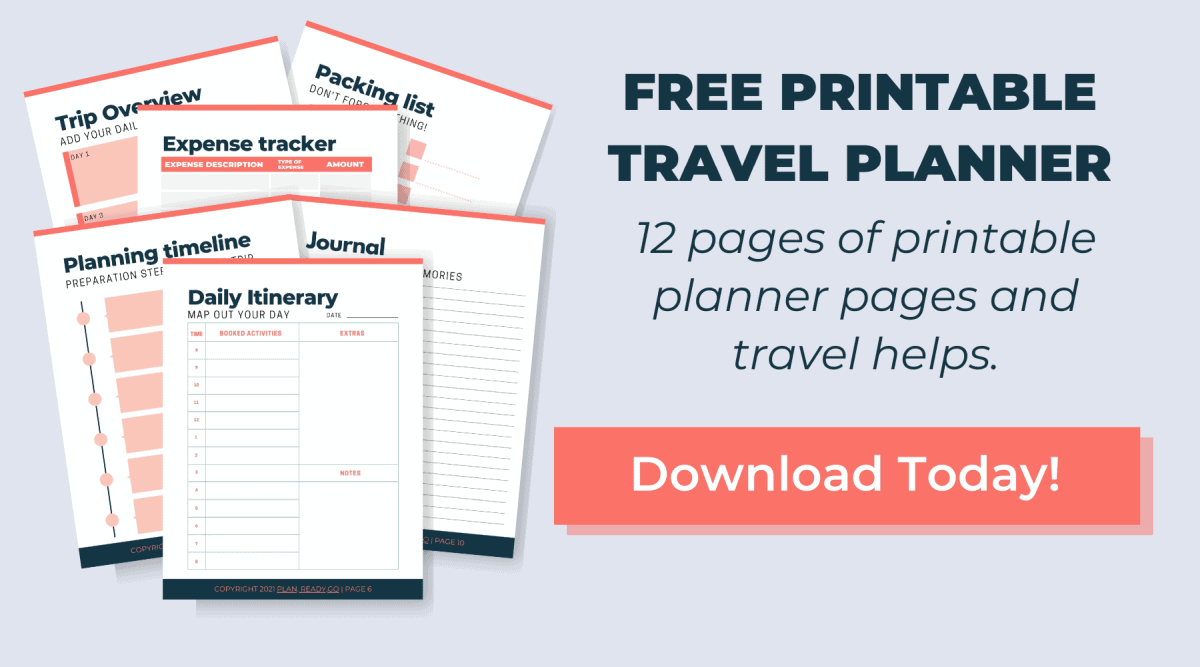14 Tips for Visiting Grand Teton National Park
Thinking about traveling to Grand Teton National Park? You’re in for a treat. It’s one of the most beautiful national parks in the United States. Here are all the top tips for visiting Grand Teton National Park.
Grand Teton National Park preserves and protects the Teton Range of the Rocky Mountains. This beautiful mountain range draws millions of visitors every year. I definitely think you should be one of them.
This article will get you on the way to having the best possible Grand Tetons trip. I’ll cover all the basics from how to get to the Park, and where to stay, plus quite a lot of things you might not have thought about.
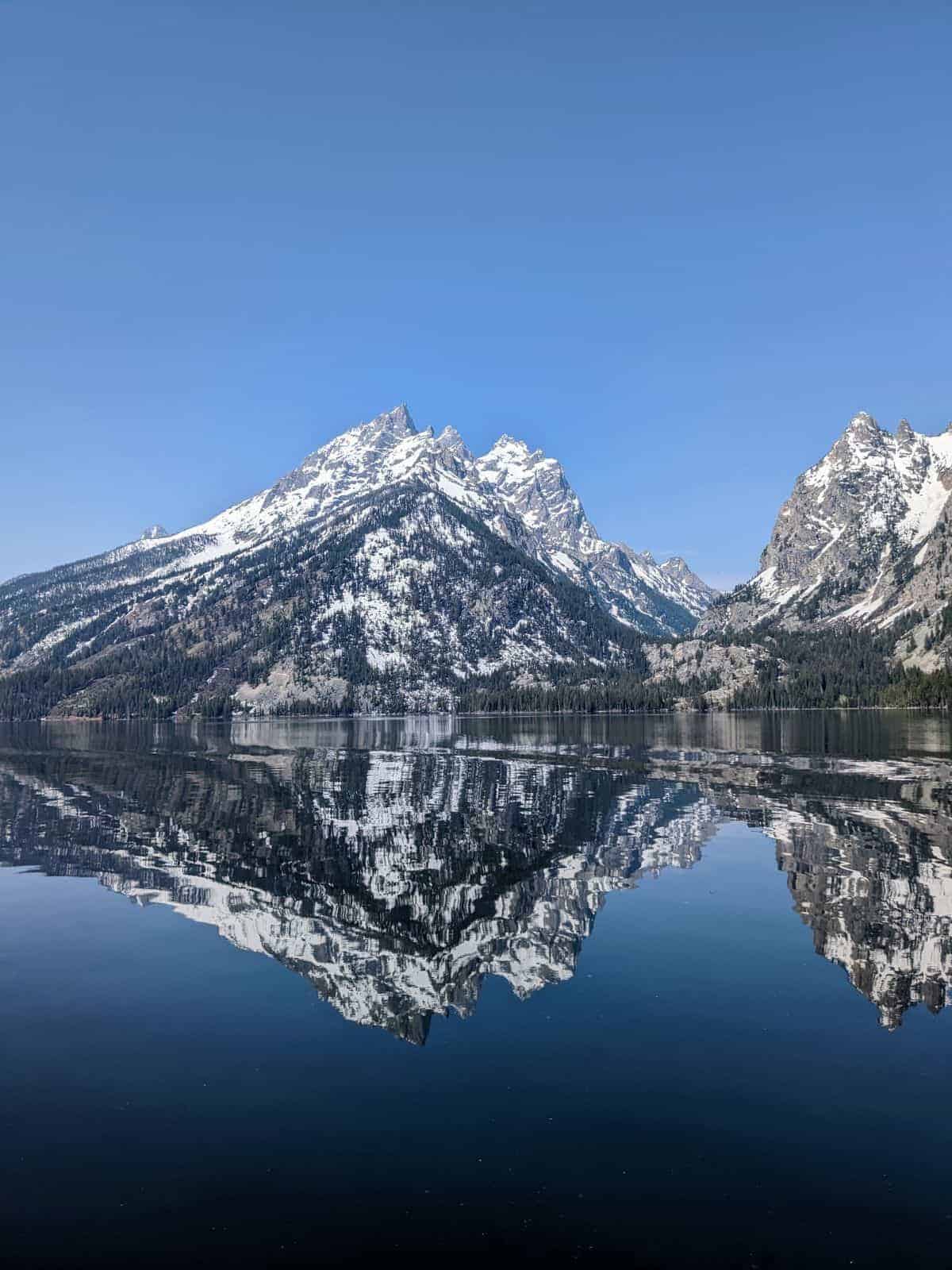
This post may include affiliate links. If you make a purchase through one of these links, I may earn a small commission at no additional cost to you. As an Amazon Associate, I earn from qualifying purchases. See disclaimer.
Plan the perfect trip to Grand Teton National Park with this free printable travel planner.
Getting to Grand Teton National Park
If you’re flying to the Grand Teton National Park area, the closest airport is Jackson Hole Airport (JAC). In fact, this airport is within the boundary of Grand Teton National Park. It’s about 9 miles from the town of Jackson. American, Delta, United, and Alaska Airlines all offer year-round flights to JAC.
If you’re interested in flying into and out of a larger airport for your trip, consider Salt Lake City International Airport (SLC) or Denver (DEN) International Airport. SLC is about 280 miles from Jackson. DEN is over 500 miles from Jackson Hole. It’s the nearest major hub airport to both Grand Teton and Yellowstone National Parks.
PRO TIP: If you have flexible travel dates you need to check out Going (formerly Scott’s Cheap Flights). You get amazing flight deals sent straight to your inbox with instructions on how to book directly with the airlines. Check out Going here. Going is my favorite way to find great travel deals.
Plan as far ahead as possible for your trip
Planning far ahead for your visit to Grand Teton National Park is the best way to make it more likely that you will have a successful trip.
While you don’t need timed reservations to get into Grand Teton, there are some things you need to plan for (or at least give some thought) ahead of time.
- If you want to stay within the park grounds, lodging can be booked well in advance. Book your room/cabin or make your camping reservations as far in advance as you can.
- If you’re planning to stay in the nearby town of Jackson, Wyoming, you’ll want to be aware that hotel prices can soar there in the summer, during the peak Grand Teton visiting months. Start looking at hotel rates early to have the best chance of scoring something a little more affordable.
- Have in mind any special excursions or activities you want to do and know how far ahead you need to book. Popular activities in the area include horseback riding, Snake River float trips, or a Jenny Lake boat ride.
Plan ahead for where you will stay
There are some great lodging options inside the park including:
- Jenny Lake Lodge
- Signal Mountain Lodge
- Jackson Lake Lodge
- Colter Bay Village cabins
- Camping (there are nine campgrounds inside the park)
Where to stay in Jackson, Wyoming
Hotels in Jackson, Wyoming, provide a lot of options as far as amenities. You can also find accommodations that will fit a range of different travel budgets.
Even if you choose not to stay in Jackson, you’ll find some great dining options there as well as good stores to pick up supplies like Target, Albertson’s, and Whole Foods.
- Cowboy Village Resort offers western-themed cabins with kitchenettes. The resort is near the center of Jackson, and it’s popular with traveling families.
- The Lexington at Jackson Hole is located near the center of town, close to the famous elk antler arches on the town square. It’s less than five miles from the park, and you can get suite rooms with a kitchen or a fireplace.
- Wyoming Inn of Jackson Hole is located a little outside of the center of Jackson, but still in town. The spacious rooms and comfy beds are popular with guests.
Staying between Grand Teton National Park and the town of Jackson
We enjoyed our stay at The Flat Creek Inn just across the road from the National Elk Refuge. The Inn is located between the center of Jackson and the entrance to Grand Teton National Park.
We loved having a spacious king room with a living area and a full kitchen and dining area. The convenient location and amount of room you can get for the money make The Flat Creek Inn a great option.
Another option is right next door to the Flat Creek Inn and it’s the Elk Refuge Inn. It also gets good reviews from guests.
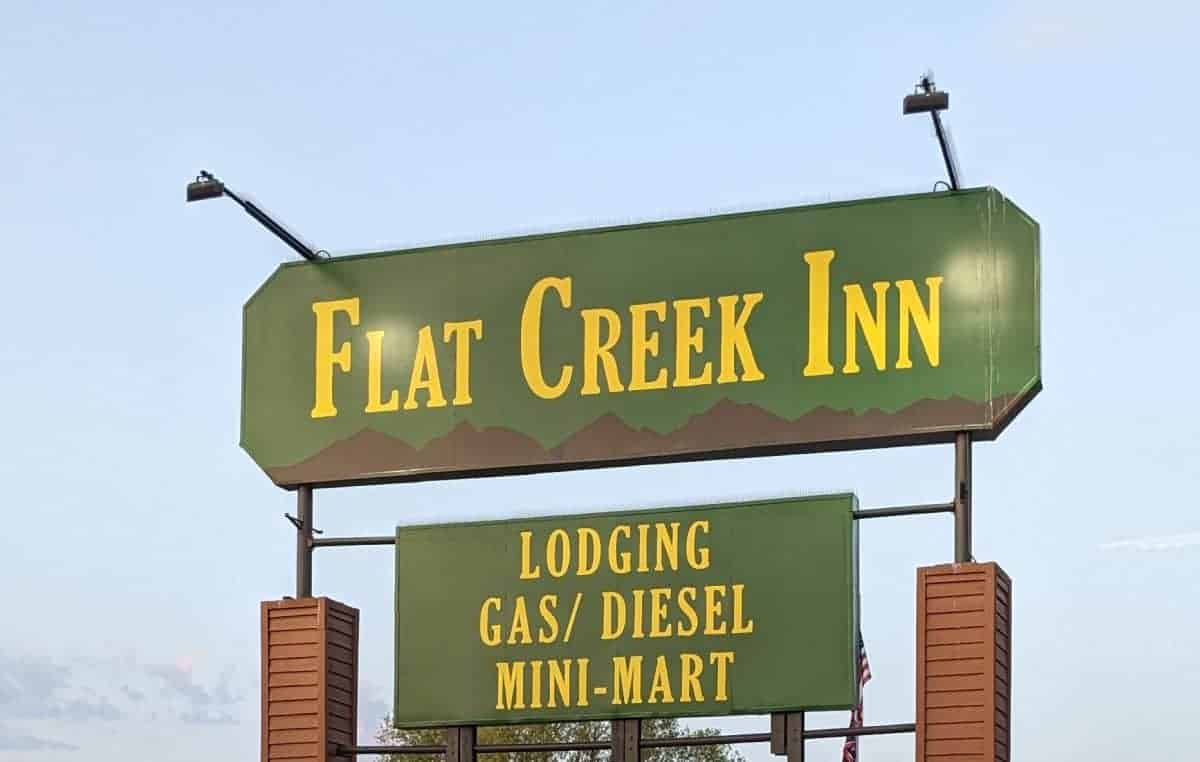
Check on closures ahead of your trip as well as during
National Parks (and Grand Teton is no exception) experience closures to entrances, trails, roads, and things regularly because of weather, road conditions, fire, etc.
Some of these are long and routine, such as the Teton Park Road closure every year from November through April. Teton Park Road is the main road through the park that runs closest to the Teton Range.
Other closures are short and perhaps out of the ordinary, such as a temporary closure to a trail because of bear activity in the spring.
The National Park Service website and the official app are good things to keep you up to date with alerts and park conditions. This will include road conditions, temporary and wildlife closures, weather alerts, and more.
Make sure you’re aware of normal weather patterns during the time of year you plan to visit Grand Teton, and then keep an eye on the official alerts for anything unusual/closures that may affect your trip. Once you’re in the park, you can also speak with a ranger if you have specific questions about trail conditions, when temporary closures might be lifted, and other things like that.
Use GuideAlong
Grand Teton National Park is fairly compact making it pretty easy to get around and see basically everything rather quickly. I always make it a point to get a map at the Visitor Center or when I go through an official park entrance. The map notes the most popular places to stop in Grand Teton National Park.
You may find that using a paper map helps to keep you visually oriented to wherever you are in the park at any given time.
Another great option is to download the GuideAlong app and purchase the self-driving Grand Teton audio tour.
We love using GuideAlong. It’s like having a movie trailer narrator/tour guide riding right beside you in your car as you tour the park. You’ll learn about the park’s history, great ideas for where to stop, important natural and historical features of the park, and more.
TIP: Keep track of all the amazing sites you’re seeing in the park with this printable Grand Teton National Park bucket list.
On a quest to visit all 63 U.S. National Parks? Grab your own copy of the printable national parks tracker to check off your progress as you visit each park.
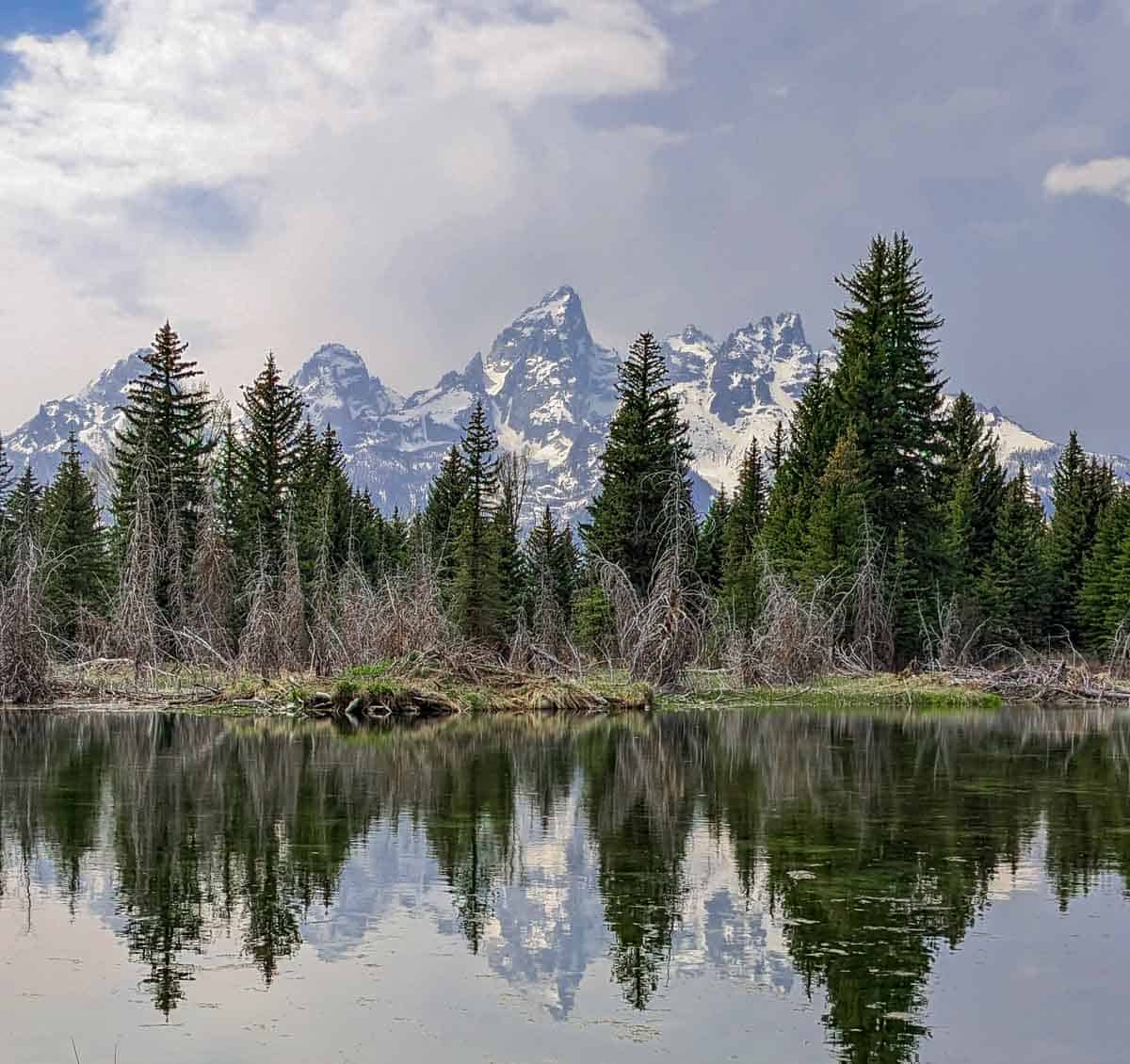
Plan to spend two days in the park
I’d say two full days is the perfect amount of time to enjoy the best of what Grand Teton has to offer. See my Grand Teton National Park itinerary for more about how I recommend you spend your time in the park. This itinerary is especially helpful if it’s your first time in Grand Teton.
With two full days, you can do the entire 42-mile Grand Teton scenic drive, explore the popular and beautiful Jenny Lake area, do a short hike or two, explore Jackson, etc. Of course, you could easily spend more than two days in Grand Teton (a LOT more than two days) especially if you enjoy hiking.
Only have one day to see the park? Just follow my one-day itinerary for Grand Teton to discover this park’s highlights in just one day.
Start your day as early as possible
The National Park Service recommends visiting Grand Teton before 9 a.m. and after 4 p.m. as one of the best ways to avoid crowds in the park. I think this is a really good idea and it will be especially true if you are traveling during the peak months of July and August.
Avoid Jenny Lake in the middle of the day if at all possible. Period. Especially on weekends. And especially during the peak summer months. Jenny Lake is one of the most popular spots in the park (if not THE most popular).
The parking lot can fill up, and once it does you’ll have to park out along the Teton Park Road. That’s not fun.
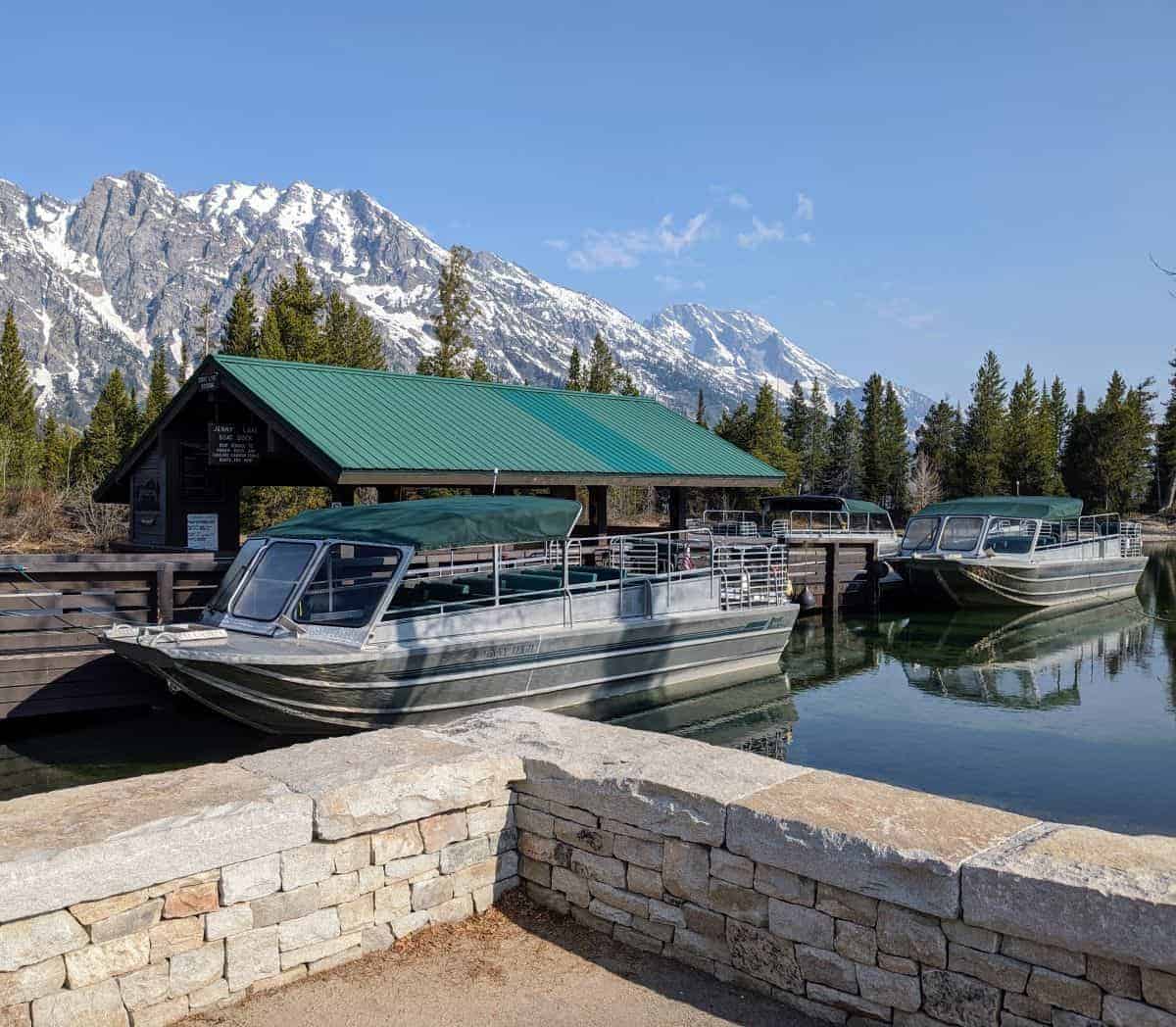
Stop in at a Visitor Center
Do not bypass National Park Visitor Centers. Just don’t do it. I will always tell you to stop by a Visitor Center as soon in your itinerary as is practical.
You can get paper maps of the park, hiking trail maps, talk to ranger staff, and more. Depending on the Visitor Center, there might be an orientation film you can watch that tells you more about the history of the park or there may be museum-style exhibits that will enhance your time in the park.
And don’t forget that you can also stamp your national parks passport and explore the bookstore or gift shop.
Grand Teton National Park has three Visitor Centers.
- Craig Thomas Discovery & Visitor Center
- Jenny Lake Visitor Center
- Coulter Bay Visitor Center
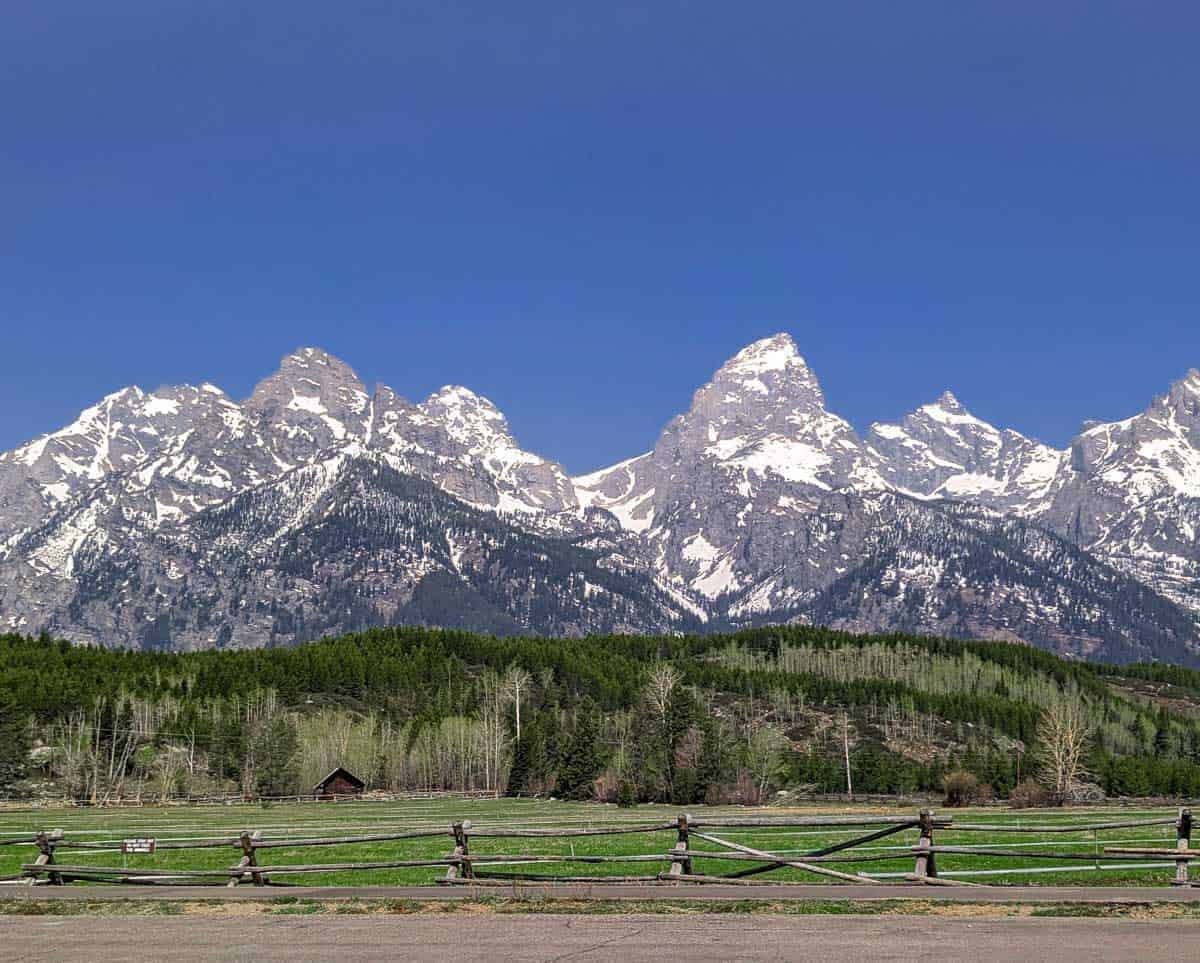
Pack layers
When it comes to Grand Teton National Park weather it’s best to prepare for the unexpected. And dress in layers as you’re out exploring the park. Grand Teton is at a high elevation (of course) and its winters are long and cold. Believe it or not, snow and frost can happen in any month there.
- In April, May, and June, you will encounter mild days and cool nights, but don’t be surprised if rain and snow decide to show up.
- In July and August, warmer days will be the norm, but the nights can still be cooler. Thunderstorms are common (hello, rain gear!)
- In the fall, the days can often be sunny though you might encounter rain or even snow. Expect the nights to be chilly.
- In the winter months, it’s snow, snow, snow. Though sun is common in the day between snow storms, the nights will be freezing.
Basically, the norm is evenings that are noticeably cooler than the day even into the warmest parts of the year.
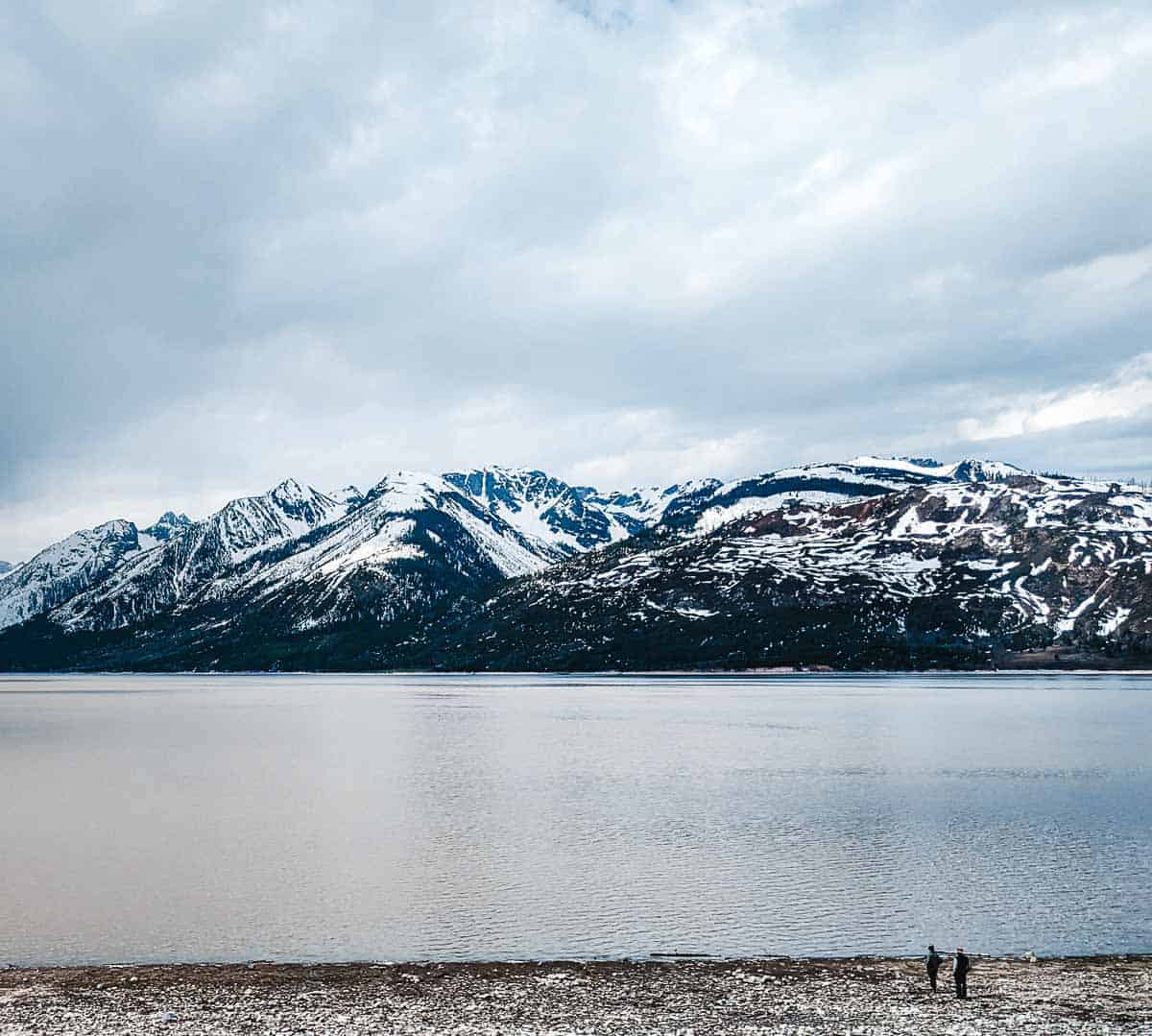
Here are a few of my favorite layers to pack when I travel.
- The Columbia Arcadia II jacket is a great option you can easily roll up into your backpack. It’s lightweight, breathable, and waterproof. I love this for when I need rain protection but not necessarily extra warmth. Check out the Arcadia II on Amazon.
- If you need something warmer, check out Columbia’s Bugaboo II Fleece Interchange jacket. I really love mine Check the Bugaboo II price on Amazon here.
- The outer layer is waterproof, breathable, and has a really good, adjustable hood. It’s noticeably warmer than a basic rainshell like the Arcadia II.
- The inner layer is a thermal-reflective fleece.
- You can zip the fleece layer into the shell to make a cozy, waterproof coat or wear each layer separately.
Wear comfortable shoes
It’s safe to always plan on doing a lot of walking in national parks. Even if I’m not doing any “hiking,” I know I’ll want comfortable shoes.
I often wear my waterproof hiking shoes even if I’m not hitting any official trails. I prefer to wear low-top shoes made for hiking rather than high-ankle hiking boots (which I find too constricting). My Keen Terradora II’s are my go-to waterproof hiking shoes. Check them out on Amazon here.
If you can, I do recommend that you find a good outdoor gear store like REI and try several pairs of hiking shoes, boots, or trail runners before you purchase. What feels great on my feet may be uncomfortable for you.
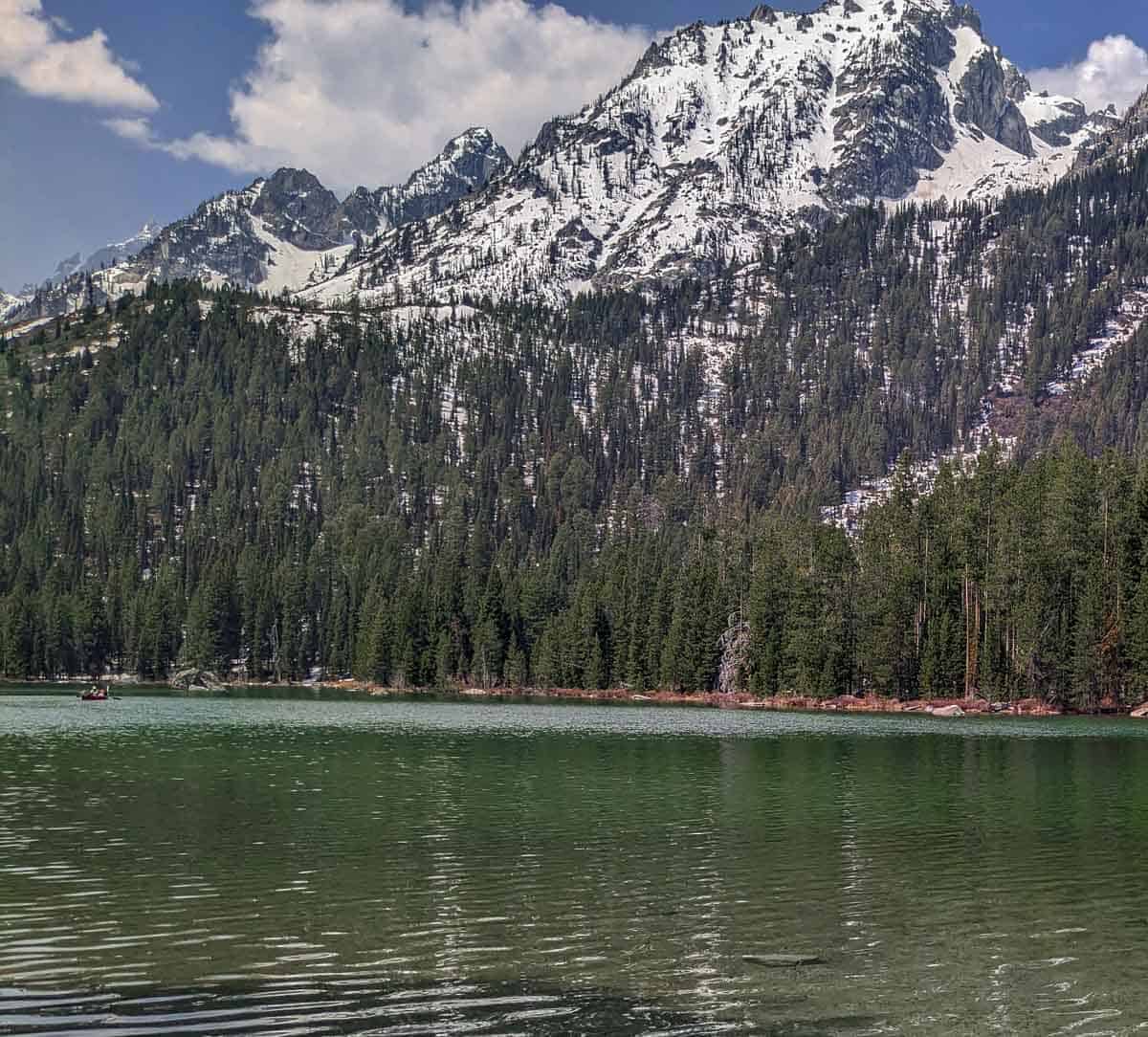
Plan to bring your lunch with you
While there are places to eat in Grand Teton National Park, I recommend that you bring your lunch into the park with you (and snacks too of course!) plan to pack in your lunch along with snacks even if there are places to eat in the park.
Here’s why I recommend this (especially for short trips):
- You’ll be able to save a little money on your trip if you pack a lunch rather than eat at a restaurant in the park.
- When you pack your lunch you can eat as soon as you’re ready to stop for a bit…or even continue to drive as you eat. You won’t have to take time from your park exploration to search for a restaurant or drive out of the park all the way back to Jackson.
- The “atmosphere” at Grand Teton picnic sites just can’t be beat…in my humble opinion.
A picnic at Grand Teton National Park can be as simple as backing into a scenic turnout parking space, opening your car’s back hatch, and enjoying a makeshift tailgate meal (without the grilling) with a stunning view of the beautiful mountains.
There are also several designated picnic areas in the park available for all guests. I love this beautiful spot overlooking Jackson Lake adjacent to the Chapel of the Sacred Heart and near Jackson Lake Dam.
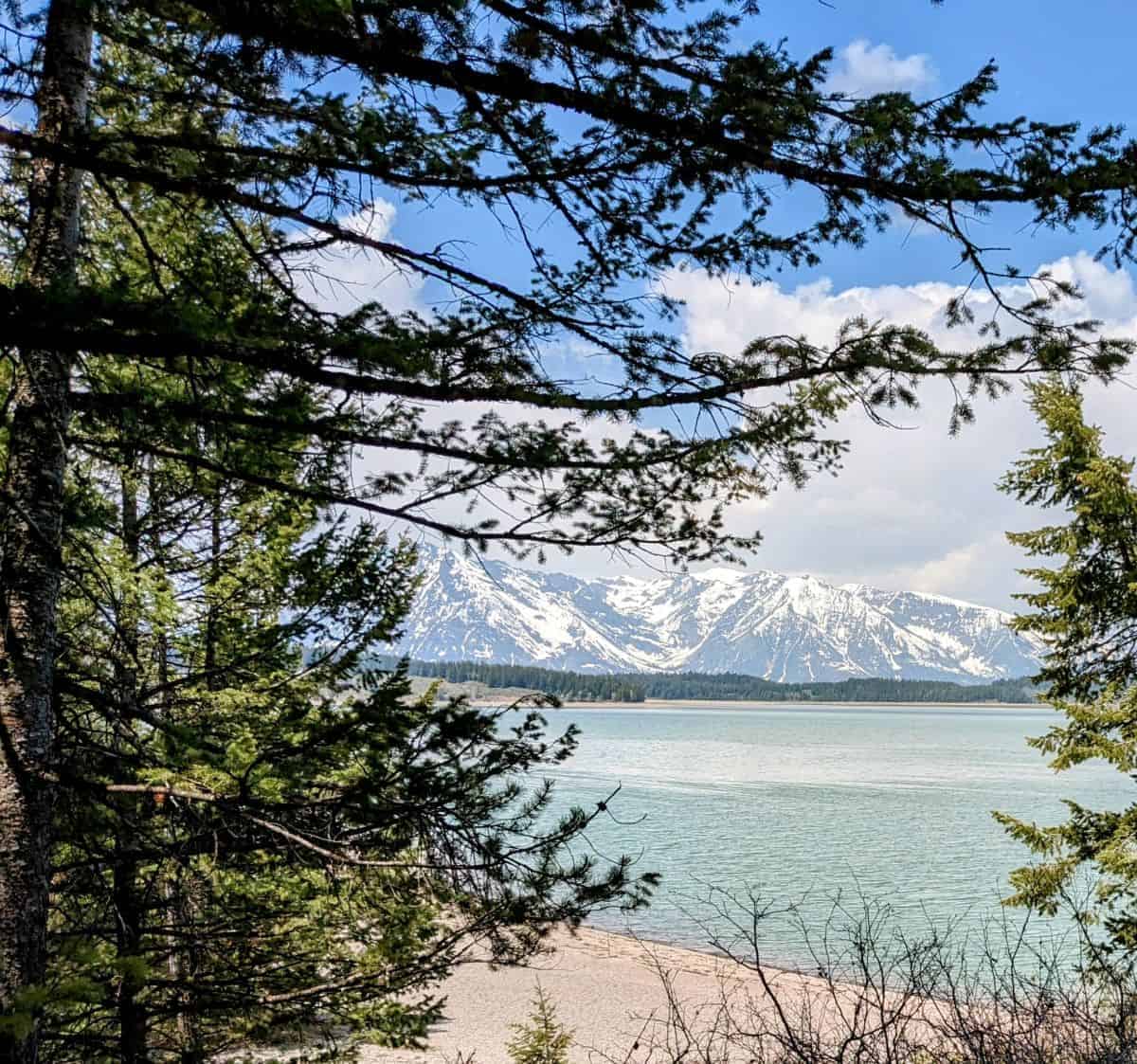
You can shop for picnic supplies at a grocery store in Jackson such as Whole Foods or Albertson’s.
Be alert for bears
Grand Teton National Park is a haven for black bears and grizzly bears. You need to understand that you may encounter bears during your Grand Teton trip, and most importantly you need to know what to do if you do have a bear encounter.
Do not disregard posted National Park Service signs closing trails or areas of the park because of bear activity. Those closures are for your safety and for the safety of the greater Yellowstone ecosystem bear population.
Carry bear spray, know how to use it, and stay 100+ feet away from bears.
Repeated contact between humans and bears can change bear behavior in such a way that it becomes very dangerous for humans and can make it much more likely that the bear will need to be destroyed by park ranger staff.
This is a big deal. Between bears and humans, humans are the only ones who truly understand the consequences for bears. We should all take that responsibility very seriously. You can find more information about bear safety and recreating in bear country on the National Park Service website.
Remember to leave no trace
National Parks have been seeing large increases in visitor numbers in the last few years. While it’s great that so many more people want to enjoy our national parks and the outdoors in general, all that human activity does take a toll on the parks.
Following the seven principles of Leave No Trace can help mitigate and even minimize the impact we have on the wilderness, plant life, wildlife, and the precious ecosystems we’re visiting. For more information about Leave No Trace, visit lnt.org.
Combine your Grand Teton visit with a trip to Yellowstone National Park
The southern boundary of Yellowstone National Park is just a few miles from the north boundary of Grand Teton National Park. The two parks are connected by the John D. Rockefeller Jr. Memorial Parkway.
As long as you’re already making the journey to western Wyoming, consider combining your Grand Teton National Park trip with a visit to Yellowstone. The two parks pair well, and it just makes sense to see both since they’re so close together.
For more details see my itinerary for 7 days in Yellowstone and Grand Teton.
A Yellowstone day trip from Jackson Hole is an option if you’re short on time.
Road trip!
More articles with Grand Teton tips
Pin this post for later!
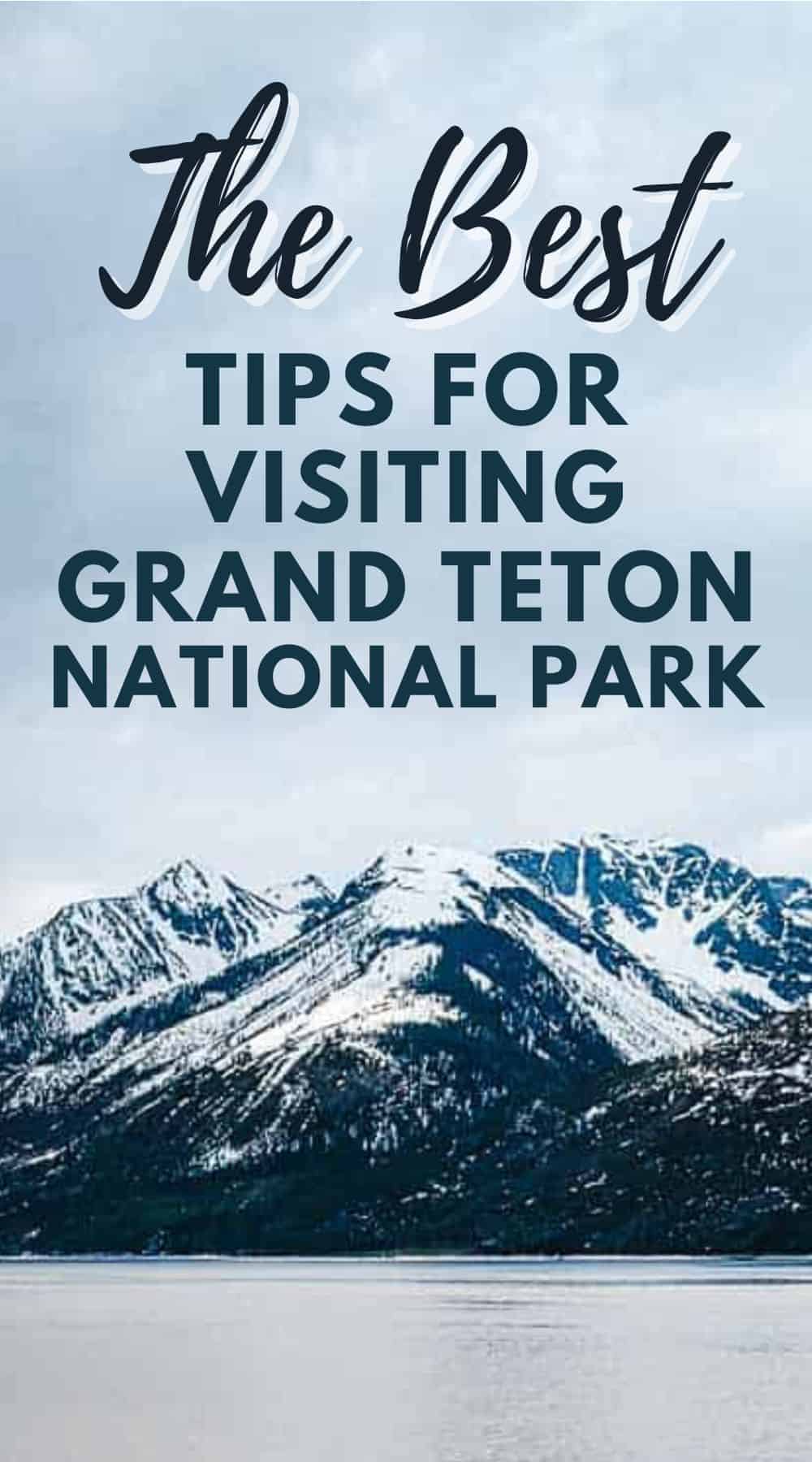
View the web story
